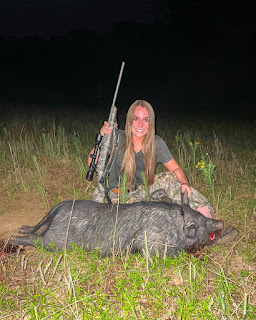Feral pigs have roamed the woods of the U.S. for centuries and are a major feature in the U.S. countryside, with one Twitter user famously going viral in 2020 complaining about the "30-50 feral hogs" that kept disturbing their kids playing in the yard.
It seems that these traditional wild boars have now crossbred with domestic pigs, creating huge hybrid hogs that are descending en masse from Canada into the U.S., primed to cause even greater destruction than usual.
These so-called "super pigs" that are moving south from Canada are "incredibly intelligent, highly elusive," larger in stature than their cousins, and capable of tunneling into snow to survive in colder climes, the Guardian reported in February.
The United States Department of Agriculture (USDA) says that the U.S.—having brought feral swine over during the country's colonization in the 1500s—has around 6 million feral swine across at least 31 states. These boars, having lived away from humans for many generations, are now considered an invasive species. They usually weigh 75 pounds to 250 pounds, but can grow even larger.
"Wild pigs are a very successful species because of their generalist diet and habitat preferences, their tolerance of a broad range of climate conditions, and relatively high population growth rate," Jim Hone, an emeritus professor of wildlife ecology and management at the University of Canberra in Australia, told Newsweek.
Wild boars cause damage to farmlands, crops, properties and livestock, digging through fields hunting for food and attacking other animals and their nests.
America's hunters are willing to accept the challenge.
The Wombat has Late Night With Rule 5 Sunday: Riley Gaines up and running on The Other McCain.



Not really a problem up here in Alaska, although I'd sure be willing to take a shot at hunting these.
ReplyDelete